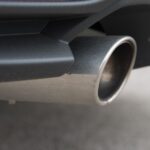Many people are unsure about leasing
Lenders and car dealers can make leasing difficult by having a lot of confusing terms and tricks.
One problem is that many so-called experts make broad statements such as “You should NEVER rent” or “Leasing can be TERRIBLE.” These statements are clearly incorrect.
We recommend that you fully understand the meaning of leasing if you are thinking about it. Do not listen to anyone or anything your father-in law has said about leasing. This guide is for you. Take your time and read it.
Must Read: five best hid kits to buy in 2022
These are the main reasons people lease:
- The monthly cost of leasing a car is typically lower than that required to purchase the same car.
- Leasing cars is a great way to save money on repairs and basic maintenance, as most leases last only two or three years.
- Leasing offers tax benefits to self-employed individuals, businesses, as well as those who are able to expense vehicle costs.
- Leasing is fun because you can drive a new car every 2-3 year.
- These are the main reasons people don’t decide to lease:
- They typically drive over 15k miles per annum, which is the maximum you can drive if your car is leased.
- They are willing to commit to owning a car for 10 years in order to reduce their transportation costs.
Never Miss: 9 best motorcycle bags for 2022
They don’t get leasing
A Few Questions to Determine if Leasing is Right for You
These are five questions that you can ask to determine if you’re a suitable candidate for leasing a car.
Are you a car owner who likes to have your vehicle until it is gone? If you answered yes to these questions, then lease. Leasing is about convenience and the ability to get a new car every two years. These things are not important to you, then buying and maintaining a car is best.
Do you want to make the most of every dollar you spend? If you answered yes, don’t lease. Leasing is almost always more costly than buying, if you look at it in dollars and cents. *
Are you a meticulous car owner? Good candidates for leasing are those who care about scratches and dents. Leasing candidates who aren’t concerned about scratches, dents, carpet stains, or torn seats are not good candidates.
Also Read: five best car seats for bad back cushion
Are you a frequent runner who drives less than 15,000 miles per year? Leasing is not an option if you drive less than 15,000 miles per year.
Are you a business owner or self-employed? If so, is it possible that someone else pays your vehicle expenses. If you answered yes to any of these questions, talk with your CPA about leasing. A lease is a great option for you.
*NOTE: If yes to the question, then you should look for the smallest and most affordable vehicle that meets your needs. It doesn’t make sense to say, “I want every dollar to be maximized,” then go on and buy a luxury pickup truck for $60,000 as a commuter vehicle.
Second, Some Terminology
If you have answered all of the above questions and are still reading, we will next define some terms.
- Residual value – Also known as the “lease ending value”, the residual value represents how much the leasing company thinks the car will fetch after the lease ends. The factors that influence residual values are the length of the lease, mileage, trim level, engine package and vehicle trim, as well as other factors such as lease length and mileage.
- Gross Cap Cost – This is the total vehicle cost before rebates, money down or trade equity are deducted.
- Cap Cost Reduction – This is the down payment for the lease and minus any fees up-front (like taxes, dealer fees or the first payment).
- Net Cap Cost – This simply refers to the gross cap cost less the cap cost reduction.
- Acquisition Fee – This is the charge that the leasing company makes to “acquire” your lease.
- Security Deposit – This is typically one month’s rent and it’s kept by the bank until the car is returned. This will be used to pay for damage, extra mileage, and termination fees.
WearCare, or “Wear and Tear”, protection- This is basically an insurance policy that covers minor damages to your vehicle during the term. Things such as cracked or pitted windshields, worn tires, and dents. This is usually in lieu of a security deposit.
How Auto Leases Are Structured?
You lease a car for 24 to 36 months. You’ll also have to pay for “use” of your car during that period, which is just depreciation.
Depreciation refers to the car’s current value minus its future value. If the car’s current value is $25000, and the value in three years is $10,000, then the depreciation equals $25,000 (today) minus $10,000 (3 years). This works out to $15,000 ($25,000-$10,000 = $15,000).
Leasing companies calculate the future value, which is $10,000 in this example. This number is not negotiable and is usually calculated as a percentage off the vehicle’s MSRP. This is called a residual value.






